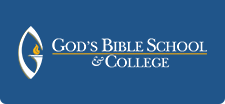Assessment
 Transparency Framework
Transparency Framework
The NILOA transparency framework is comprised of six sections.
- Student learning outcomes statements
- Assessment plans
- Assessment resources
- Current assessment activities
- Evidence of student learning
- Use of student learning evidence
Student Learning Outcomes Statements
Assessment Plans
Direct measures require students to demonstrate the knowledge, skill or disposition that is being assessed. So a direct measure of math would include, say, addition problems.
Indirect measures focus on things related to the knowledge, skill or disposition being assessed. So an indirect measure of math might ask students to rate their own math ability on a 5-point
Assessment Resources
If you are unfamiliar with
Assessment of student learning means what it sounds like: are a college’s classes and degree programs effectively helping students learn and develop? This is an important question for students and
Assessment of institutional effectiveness has to do with how well a college is functioning. Are offices effectively accomplishing their tasks? Are services being offered
What is
Tools include tests, surveys, inventories, checklists, anecdotes and more: these make up the toolbox for measurement, which means quantifying something (it could be behavior, effectiveness, knowledge or many other things).
Standards and goals need to be established prior to measurement. This gives a sort of “yardstick” that can be used in
The term assessment is also used broadly to include a cycle involving both assessment and evaluation.
What is evaluation?
The assessment cycle or loop
In discussions of assessment, you may often hear talk about “closing the loop.” What loop is this?
The cycle starts with program implementation – teaching a class, offering a degree program, operating an office, etc.
After (or during) implementation, assessment takes place (remember, this means measuring something for which goals have already been established).
Once assessment results are available (and typically after implementation has concluded an iteration or phase), results are used to make an evaluation about how effective the implementation was. What was good? What could be improved?
Based on
Assessment Tools
This section focuses on providing resources to staff and faculty.
Unfortunately, most attention is paid to the academic side of assessment, so no links here are provided to resources related to assessing institutional effectiveness other than this one: the Professional and Organizational Development (POD) Network maintains useful resources, especially their very active email list. Questions in that area may be directed to the Director of IR.
“Authentic assessment” resources
- Authentic assessment toolbox (Jon Mueller)
- Critical Incident Questionnaire (Stephen Brookfield)
Website for Helen Barrett,portfolio expert
General
- Assessment and rubrics (Kathy Schrock)
- Collected Essays on Learning and Teaching: includes assessment section
- Collection of resources (Iowa State University)
- Assessment Commons (North Carolina State University)
- Effective Assessment in a Digital Age (JISC)
- SALG: structured surveys to gauge student learning
- Writing outcomes (Leslie Wilson)
Rubrics
- Assessment and rubrics (Kathy Schrock)
- Association for the Assessment of Learning in Higher Education’s rubric samples
- VALUE rubrics (AAC&U)
Traditional assessment
- Exam Design (University of Texas at Austin – Faculty Innovation Center)
- Test Construction (University of Medicine and Dentistry of New Jersey)
- Using multiple-choice items
formatively (Edutopia) - Question Types (University of Texas at Austin – Faculty Innovation Center)
- Designing multiple-choice questions (University of Waterloo –
Cenetre for Teaching Excellence)
Current Assessment Activities
Activities listed here are used regularly, with some rotation cycles. Typically seniors complete the same assessments they took as freshmen, enabling longitudinal analysis.
Evidence of Student Learning
Developing evidence of student learning is an ongoing activity at GBSC. See reports below:
- Spring 2024 (General Education)
- Fall 2023
- Spring 2023 (General Education)
- Fall 2022
- Spring 2022 (General Education)
- Fall 2021
- Fall 2020
Additional assessment information is available on our School Stats page.
Use of Student Learning Evidence
GBSC periodically collects examples of changes based on assessment results. Typically these results feed into course, program and institutional reviews of effectiveness. They may drive change at any of these levels (e.g., different textbooks or assignments, revisions of required courses, etc.).

